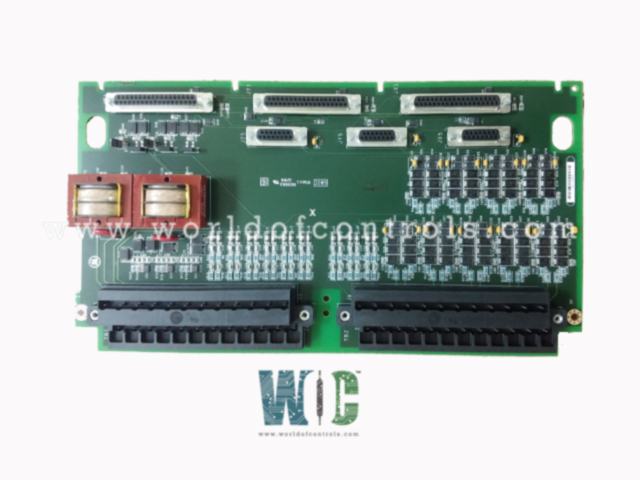
World Of Controls understands the criticality of your requirement and works towards reducing the lead time as much as possible.
IS200TPROH2C - Emergency Protection Terminal Board is available in stock which ships the same day.
IS200TPROH2C - Emergency Protection Terminal Board comes in UNUSED as well as REBUILT condition.
To avail our best deals for IS200TPROH2C - Emergency Protection Terminal Board, contact us and we will get back to you within 24 hours.
Part No.: IS200TPROH2C
Manufacturer: General Electric
Series: Mark VI
Size 17.8 cm Wide x 33.02 cm High
Function: I/O Module
MPU Pulse Rate Range 2 Hz to 20 kHz
Power Supply Voltage Input supply 28 V dc
MPU Pulse Rate Range 2 Hz to 20 kHz
Availability: In Stock
Country of Manufacture: United States (USA)
IS200TPROH2C is a Emergency Protection Terminal Board developed by GE. It is a part of mark VI control system. The Emergency Protection (TPRO) terminal board serves a critical role in providing the VPRO with essential input signals, such as speed signals, temperature signals, generator voltage, and bus voltage. These signals are an integral part of an independent emergency overspeed and synchronization protection system. The system consists of triple redundant VPRO boards, which are housed in a separate module from the main turbine control system. The VPRO boards are responsible for controlling the trip solenoids through the TREx (TREG, TREL, or TRES) terminal boards.
World of Controls has the most comprehensive collection of GE Mark VI components. Please contact WOC as soon as possible if you require any extra information.
What is IS200TPROH2C?
It is a Emergency Protection Terminal Board developed by GE
How does VPRO perform diagnostic checks on TPRO and its input signals?
VPRO conducts diagnostic checks on TPRO and its input signals to ensure the system's integrity and reliability. It monitors analog inputs for high or low limit violations, and if any input exceeds these limits, a fault is triggered, indicating a potential issue.
What happens if any of the input signals become unhealthy?
If any of the input signals are deemed unhealthy or unreliable, VPRO activates a composite diagnostic alarm called L3DIAG_VPROR, L3DIAG_VPROS, or L3DIAG_VPROT (based on the specific signal source). This alarm signals the presence of a potential fault in the system that requires attention.
Can the diagnostic signals be latched individually?
Yes, the diagnostic signals can be individually latched by VPRO. When a diagnostic fault occurs, it can retain the fault status, allowing it to be easily identified and investigated. These latched diagnostic signals can be reset with the RESET_DIA signal when they become healthy again.
What information does the ID device on board connectors contain?
The terminal board connectors are equipped with an ID device containing crucial information. This read-only chip is coded with the terminal board's serial number, board type, revision number, and plug location. This data is essential for proper identification and compatibility checking during system operation.